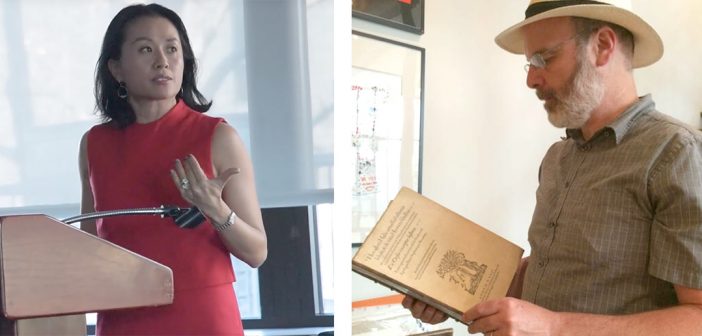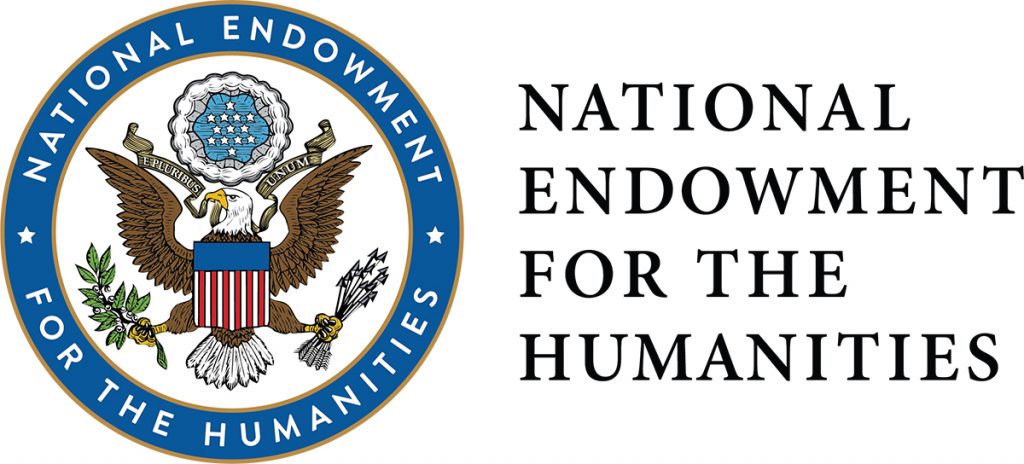On Jan. 15 the National Endowment for the Humanities announced 188 winning projects that it will fund through $30.9 million in grants. Among the winners were Scott Bruce, Ph.D., and Yuko Miki, Ph.D., both members of Fordham’s department of history.
The grants, which are for $60,000 and will last for 12 months, will allow both of them to undertake ambitious new research projects.
Translated Texts of the Church Fathers
Bruce, a professor of history, will use his grant to launch The Lost Patriarchs Project: Recovering the Greek Fathers in the Medieval Latin Tradition, a massive cataloging project that could take as long as a decade to complete.
His research revolves around monastic communities that thrived during the Middle Ages. To understand people who lived then, scholars rely on texts written in medieval Latin. Up until now, texts from that time that are translated from other languages into Latin have been overlooked, he said.
He’s identified over 90 authors who’ve been translated from Greek into Latin. Many were Christian authors who wrote mainly about theology, church doctrine, and heresy. These “patristics,” as they’re known, were considered “church fathers” at the time.
“While there have been studies on the Greek church fathers and the writing they’ve done in Greek, there’s been almost no study of how those works were translated into Latin, and how those Latin texts were read and understood in medieval Europe,” Bruce said.
“People just think ‘Oh well, it’s just a translation, and it can’t be that important. What can it really tell us?’ But the fact that people went to the pains of translating Greek into Latin and continued to read and copy these texts over the course of the Middle Ages is important.”
Since there is currently no centralized catalogue that researchers can use to access these texts, Bruce wants to create one from scratch. He’s already begun the work compiling and writing entries with help from Kasey Fausak, a Fordham Ph.D. candidate in Medieval History, who is supported by a professional development grant from Graduate School of Arts and Sciences.
“The N.E.H. has been really generous in providing funding for this. It’s basically ground work humanities—going into the manuscripts, finding texts, and presenting them in a way that’s legible and will foster future research,” he said.
Slavery in the Atlantic World
For Miki, an associate professor of history, the grant will give her time to write Brazilian Atlantic: Archives and Stories of Illegal Slavery, a book about illegal slavery in the 19th-century Atlantic World that she has been working on for several years. The project, which she described during a 2018 research seminar at the Rose Hill campus, is a narrative history of the slave trade of Brazil in the mid-1800s that punctures the idea that slavery was primarily a United States-based phenomenon that was abandoned by then, with the triumph of abolitionist movements.
“Not only do we mostly hear about the U.S. South instead of Brazil or Cuba, but the U.S. North is often considered the place of liberty, where fugitives traveling on the underground railroad fled to,” she said.
“But if you look at illegal slave trade records, it turns out that a lot of the financing for [the ships that carried slaves] came from New York City and Boston.”
Dispelling myths about slavery is something Miki has a lot of experience with. Her last book, Frontiers of Citizenship: A Black and Indigenous History of Postcolonial Brazil (Cambridge University Press, 2018), tackled common perceptions of slavery in Brazil. Last year, the American Historical Association awarded it the Wesley-Logan Prize for the best book in African diaspora history.
“I’m interested in questioning these big stories that we take for granted,” she said.
The narrative of Brazilian Atlantic will center around the Mary E. Smith, one of the last illegal slave ships to be captured in Brazil in 1856, she said. It will be a character-driven book modeled somewhat on Amitav Ghosh’s In An Antique Land: History in the Guise of a Traveler’s Tale, (Vintage, 1994). The challenge, she said, is figuring out a way to weave together stories of characters as disparate as the slave ship’s captain, the financiers, and the enslaved passengers, most of whom were never accurately identified in the manifest of the Mary E. Smith.
As a historian, she said, it is her responsibility to resist the desire to write a story with a satisfying beginning, middle, and end.
“We want a clean arc of a story that’s satisfying. But those of us who work in the history of slavery know we can’t get that. The archives are full of gaps, because the people who sold slaves saw them as merchandise,” she said.
“Rather than glossing over them to try to tell a story that goes from point A to point B in the end, I want to write something that also captures those questions. If you’re making a jacket or a dress, do you only see the outside of the beautiful clothes? What if you actually saw the craftsmanship, the seams and how things are made? Maybe making those things visible is part of the process. These processes are important to understanding slavery itself.”
Any views, findings, conclusions, or recommendations expressed in this article and the works resulting from the grants do not necessarily represent those of the National Endowment for the Humanities.




